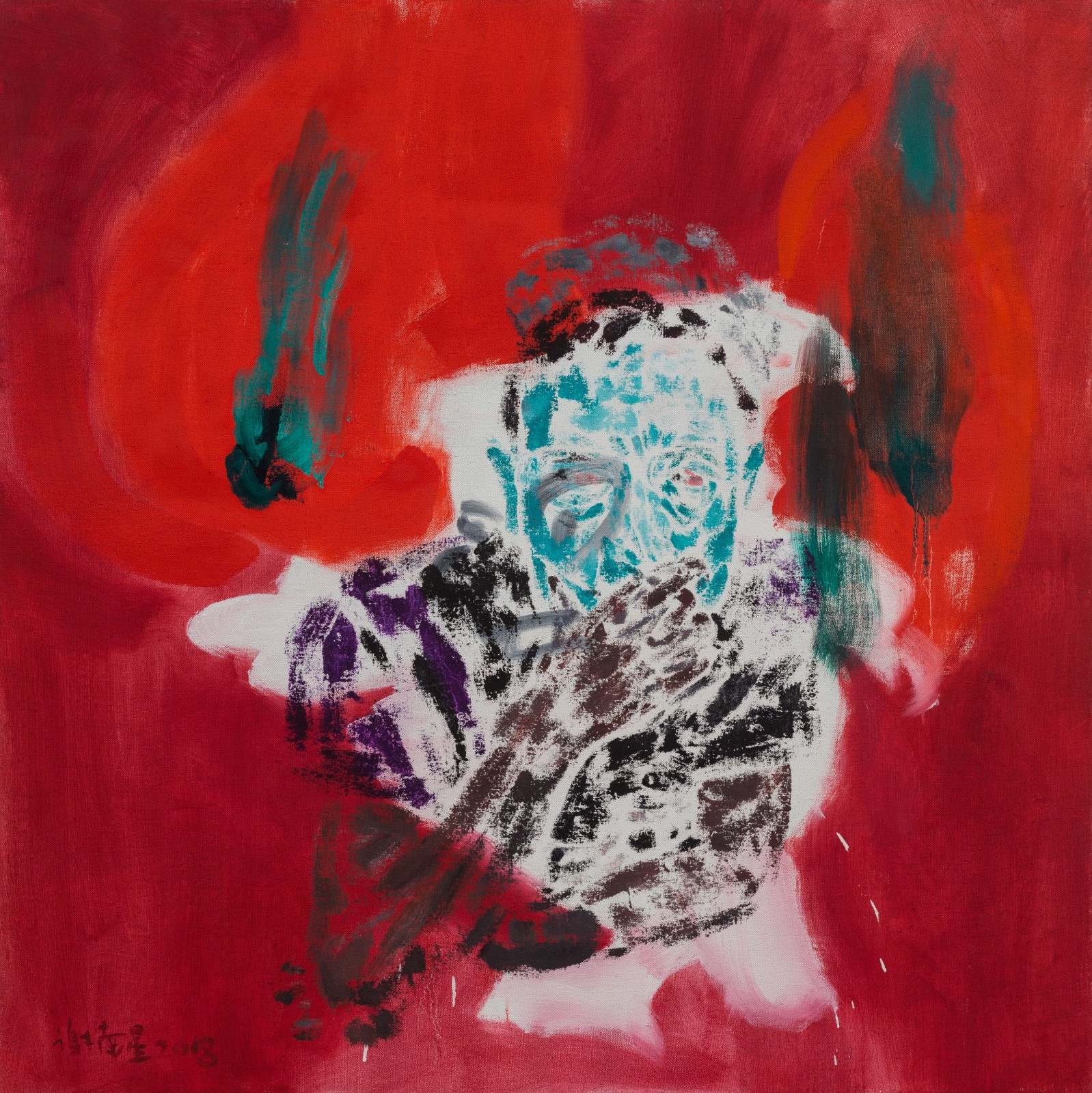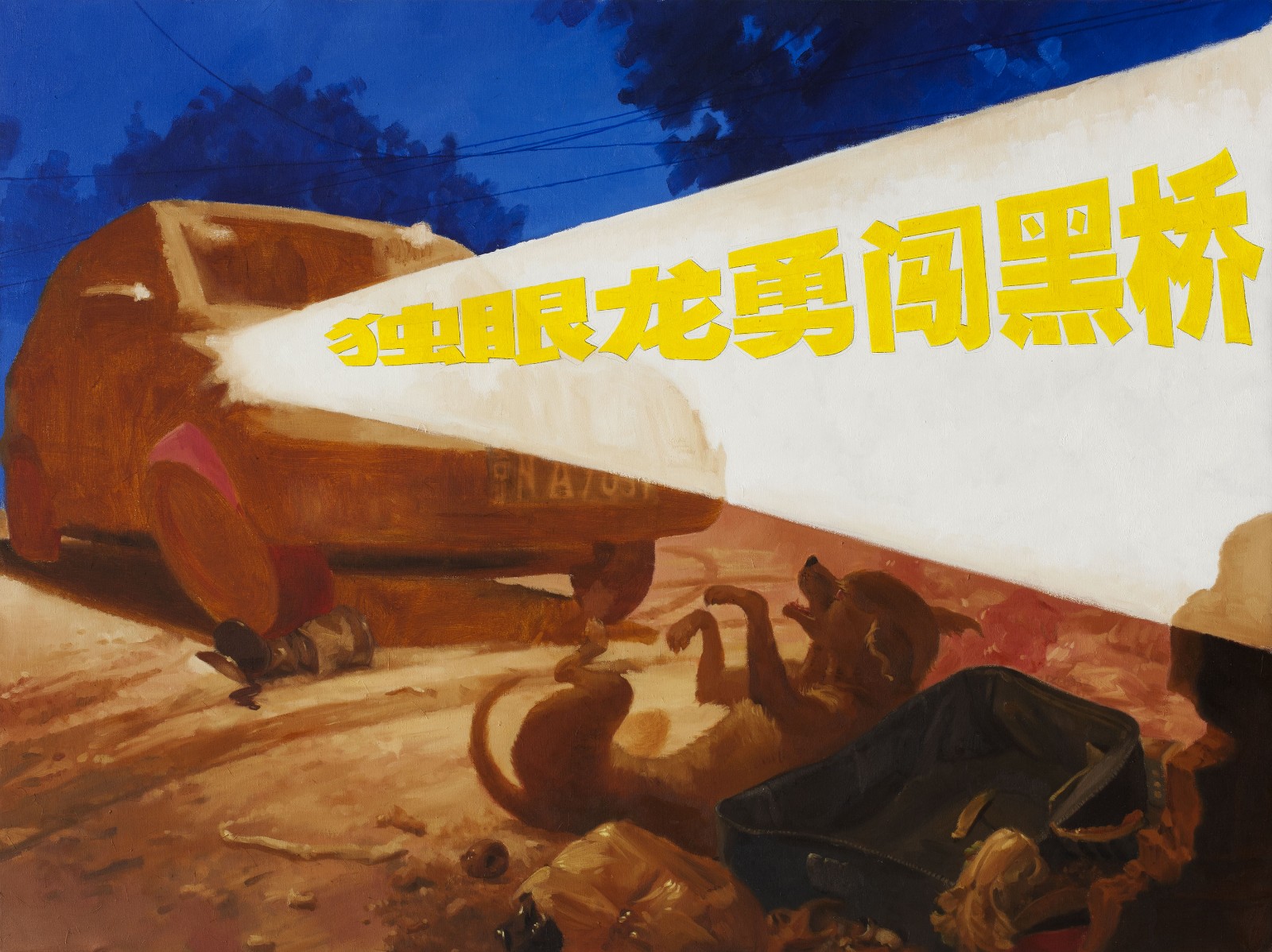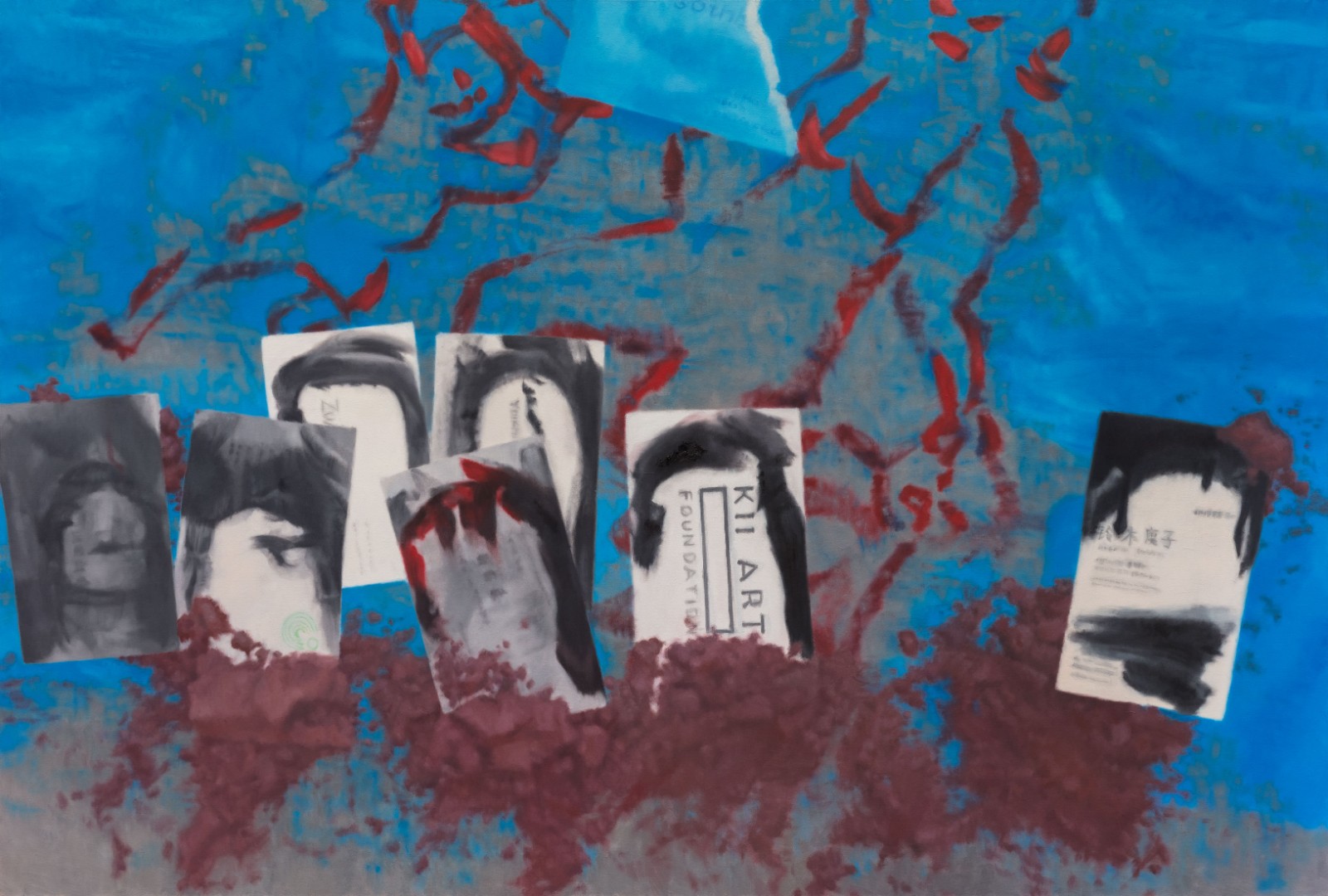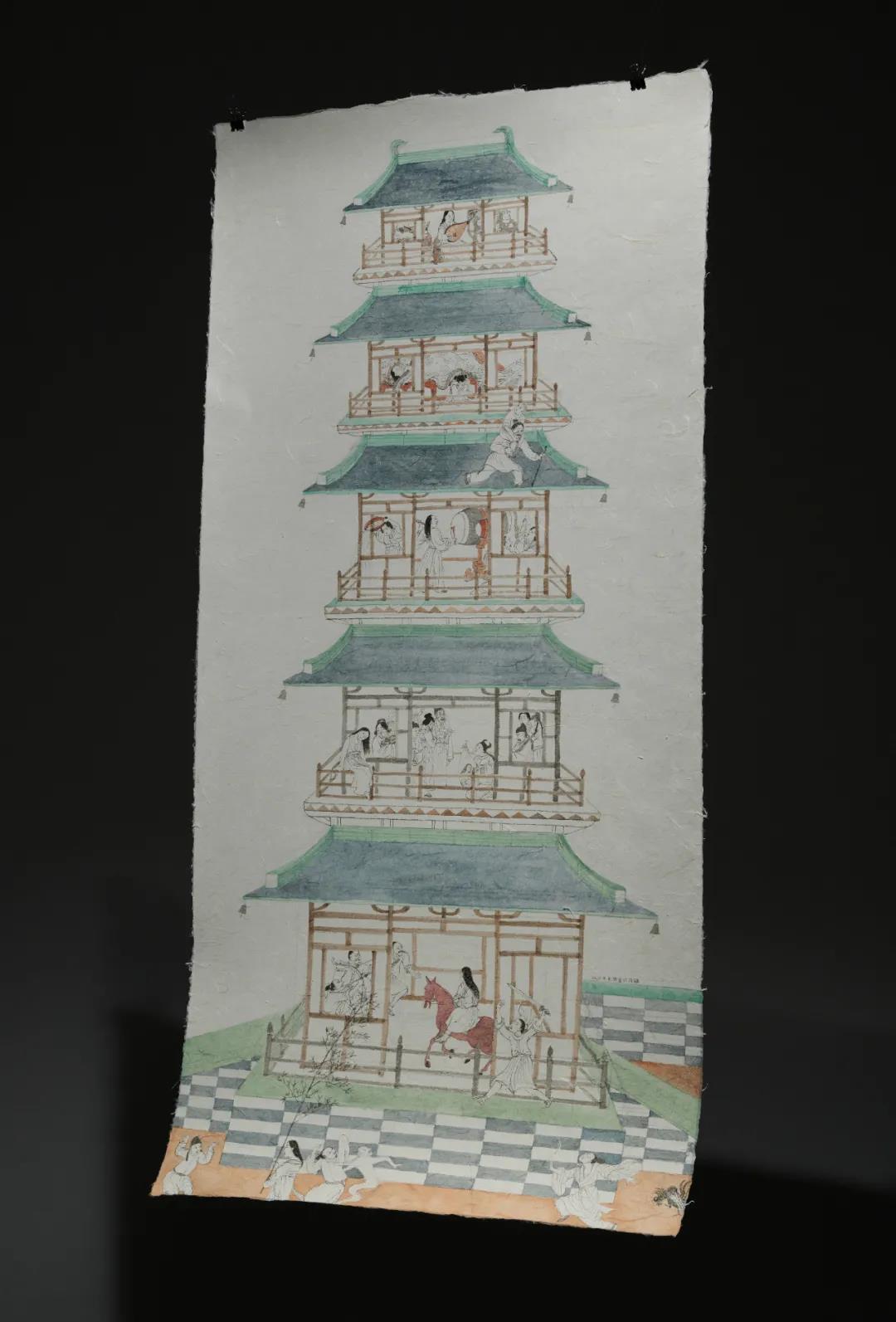
Xie Nanxing, Seven Portraits No. 5, 2018, oil on canvas, 100 × 100 cm, Private Collection
Courtesy of Ms. Li Lin, the artist and Galerie Urs Meile, Beijing-Lucerne
"Mask and Shadow": Solo Exhibition of Xie Nanxing
By Cui Cancan, Curator for the Exhibition
As the seventh project of “Nine-Tiered Pagoda”, “Mask and Shadow” resembles a transparent castle, or a ghosting phantom of the opera, attracting us to pick up the key of creation and interpretation to solve the puzzle between vision and meaning, form and content, representation and essence in art, architecture, and design. The exhibition is based on a series of portraits drawn by Xie Nanxing, with the architect He Jianxiang creating the space and the graphic designer Ma Shirui in charge of posters and other visual systems.

Xie Nanxing, Portrait No.1, 2012, oil on canvas,120 × 160 cm
Courtesy of the artist and Galerie Urs Meile, Beijing-Lucerne
Xie Nanxing, Spice No.4, 2017, oil on canvas, 220 × 300 cm
Courtesy of the artist and Galerie Urs Meile, Beijing-Lucerne
Xie Nanxing’s way of expression is completely different from traditional “portraits” as he reflects one’s emotions, morality or mental states with their social identity or personal experience rather than their appearance or look. He transforms the “portrait” and reduce it to a business card or some kind of generalized texts, such as some keywords, a story told or a peculiar anecdote related to the subject. Sometimes he will also design a cartoon image to mirror a certain figure in the fairy tale. As a result, his portraits become masks staying unrevealed, as well as shadow waiting to be interpreted. What used to be the “reality” has become “representation” in his brushwork. However, there’s no essence or reality behind the masks, neither is there any answers to the mystery behind those ghosting images. The way art provides for observing, recording and understanding the world has never been determined.
Architect He Jianxiang starts from the reconstruction of traditional buildings to design the space for the exhibition. Just like portraits, castles are another symbol for eternity in the Western ideology. Firm and solid, they take root in the ground with the interior meticulously hidden behind the monolithic walls, so that we are impressed more often by the exterior look of the grand architecture. In the brand-new “Castel Transparent”, the interior becomes visible with the originally hard exterior wrapped and suspended by soft materials. The “inner castle” is serving as an intricate cross-shaped passage for visitors to travel through. The exhibition hall is therefore divided into four split rooms with different entrances and exits, surrounded by a square winding corridor. It is difficult for viewers to distinguish the interior from the exterior, as if they are traveling through and gazing out over the “castle”, while also looking around at it from a distance at the same time.

Xie Nanxing, Seven Portraits No. 2, 2018, oil on canvas, 100 × 100 cm, Private Collection
Courtesy of Ms. Li Lin, the artist and Galerie Urs Meile, Beijing-Lucerne
Xie Nanxing, Seven Portraits No. 4, 2018, oil on canvas, 100 × 100 cm, Private Collection
Courtesy of Ms. Li Lin, the artist and Galerie Urs Meile, Beijing-Lucerne
The line between representation and reality is also blurred in the poster created by the designer Ma Shirui, with an unfocused, dull and boring picture, containing simple presentation of information. His way of expression has no symbols or metaphors. It’s realistic but abstract, finite but all involved, close to the essence, but only serves as a representation.
Against the craze for photo sharing on social media, the creations of the aforementioned three artists are neither “good-looking”, nor popular, but rather appear to be “obscure”. The mysterious and ambiguous “Mask and Shadow” makes the interpretation of art, architecture, and design no longer self-explanatory or self-evident. It forms a theater full of contemplation, doubts, and hallucinating charm. People need to observe, think, and question for a long time before accessing a more complex space and thoughts implicitly offered by the exhibition. Sometimes you’ll get nothing on the spot though, the puzzle of the “castle” may finally unfold in an eureka moment after a few days.
It reminds me of “The Castle”, a novel written by Franz Kafka where the protagonist K inadvertently opened a new dimension of narrative after failing to enter the castle close at hand. The repetitive storyline forms an infinite cycle, with the ending and beginning being equally eloquent and thought-provoking.

"Scenes": Jiang Jie, Peng Wei, Yin Xiuzhen
By Cui Cancan, Curator for the Exhibition
As the eighth project of “Nine-Tiered Pagoda”, “Scenes” is the first exhibition designed all by females to explore the individual consciousness and identity difference in art, architecture, and design, with “perception” serving as the primary tool to understand the world. The exhibition is based on the works of three artists, namely Jiang Jie, Peng Wei and Yin Xiuzhen, with the architect Xu Tiantian creating the space and graphic designer Xiao Mage in charge of posters and other visual systems.

Jiang Jie, This is drama, size variable, Cloth, iron, mirror, fish net, xanthium, gypsum, white tile (15x15cm), 2021
Pajamas, mirrors, xanthium and fish nets are the images in Jiang Jie’s works. The high-hanging clothes, the reflection in the mirrors, as well as the layered screens are pushing these images into the space to form a similar scene. Compared with the ordinary hotel room normally with two pajamas, the extra piece hanged in the exhibition hall is going to stand out easily. In the world of “Scenes”, even the slightest difference can inspire a myriad of imaginations.

Peng Wei, We need story–Tower 6, 138x70cm, Ink on Paper, 2021
Peng Wei’s works come from different periods of her creation, presenting sceneries and buildings on the body, the emotional life in the shoes, as well as the overlapping stories in the tower. The originally independent objects are stringed together with the clue of “female”. “The One in My Dreams” seems to provide another answer. Su Xiaoxiao meets a Russian poetess who lived in a completely different era, but finds that they two share an inexplicably similar scene. The perception of dreams weaves the story of desire.

Yin Xiuzhen, Untitled, size variable, clothes and concretes, 2009-2010
At the entrance of the exhibition, Yin Xiuzhen uses cement to freeze the flowing past that can no longer be reproduced. The cold materials and the temperature of life are becoming a certain kind of “experience”. The clothes worn carry the traces of memory, history and the times. When walking through these physical evidences of perception, viewers will revisit the scenes created therein as if they were brought back to a certain time and place.
“Scenes” describes similar settings in the works of three artists. Be it the worn cuffs, the lightly falling xanthium, or the body in the story, all these different elements enjoy the same goal: creating a moment of existence and an entrance into the world of perception, which will guide us into a space dominated by reading, perception and imagination, presenting us a virtual image of intuition and emotions. Information floats here as if all the stories were just told last night, pushing us to move forward while also luring us to stay.
Architect Xu Tiantian presents a space where “perception” is constantly transiting and transforming, from the subtlest body movement in the works, to the changing distance between the viewer and the body, and finally to the connection between individual identity and the public space. In the exhibition hall, viewers will visit a public “square” loaded with collective memories, a garden-like “curved corridor” and trivial hidden “residences” with the surging curves alternating and connecting the three spatial perceptions. They are also becoming a part of the exhibition space as their moving body resonates with the works around, sharing memories and similar occurrences.
The poster created by the graphic designer Xiao Mage cuts different spaces into modules, where the originally vague perception and differences between scenes become more distinct. Such keywords as “Nine-Tiered Pagoda”, “Magics” and “Scenes” connect the exhibition with the past, spurring endlessly illusional changes.
On the eighth floor of the “Nine-Tiered Pagoda”, thanks to the works of these participants, we’re approaching the top where “perception”, the most important element in art, architecture, and design, resides. It is the core of all visual culture which can travel through time and region, as well as through disciplines and genres. “Perception” is not a story, a text, or a form, but rather our naming of the world with visual art.
Courtesy Pingshan Art Museum.




























